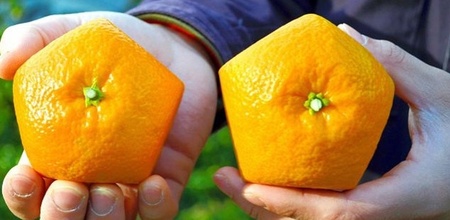Even though there are many words and expressions that characterize them for Brazilians—hai, banzai, and arigatô—the interjection né [Portuguese-language contraction of não [not] + é [is], meaning “isn’t it?”], of course, is the one that most relates to Japanese.
That is evidenced by the fact that there isn’t a single jokester who has never teased a Japanese person, saying things like, “It’s expensive, né?,” “the Japanese have the slanted eye, né?,” and “the Japanese eat raranges, né?”.
Note #1: When Brazilians say “Japanese,” they may be referring to either a de facto Japanese or Japanese descendants—including the children, grandchildren, etc., of Japanese immigrants. In addition to the “Japanese mestizos”—ethnic Japanese mixed with one or more races.
Note #2: While the Japanese say raranja instead of laranja—the citrus fruit (like orange)—the Chinese say, lalanja—the same citrus fruit. And to think there are still those in Brazil who say that the Japanese and the Chinese are all the same.
Returning to the main topic of this essay:
The most curious thing of all is that in the Japanese vocabulary there’s that same word—né—and with the same meaning as in the Portuguese language: the contraction of não + é.
And if you suspect that this means the Japanese language appropriated it from the Portuguese, you’re right!!!
Indeed, while searching the internet I discovered that during the late Middle Ages, while the Portuguese were attempting to catechize the Japanese people, the Japanese language ended up incorporating some words from the Portuguese vocabulary. Among them were the words obrigado (“thank you”)—spelled arigatô—and the word né—which is spelled without the acute accent: ne.
To this day, this interjection is used by the Japanese—and very often.
Surely, there are several reasons for this major success. But I believe it’s mainly due to the fact that the Japanese are very fond of interjections.
According to my grandfather, for the Japanese, if you do not let out a few interjections while you’re thinking, that’s a sign you think in silence. And silent thinking is a characteristic that may bother certain people while they’re talking to you.
Maybe that’s the reason for so many Uh huh… Um… Ahuh… Ih… Ah… Oh…
Coldly analyzing the word né, I’ve come to the conclusion that it’s very much in line with the Japanese way of being. For it fits perfectly well into the truncated rhythm of the spoken Japanese language.
This characteristic was very convenient for the Japanese who came to Brazil. For the interjection né would bring an abrupt end to the fluidity that runs loose in the Brazilian-Portuguese way of speaking—indeed, this particular Portuguese is known worldwide, precisely because of this fluidity, as the “language without bones.”
I’ve also noticed that there is a major paradox within this interjection: the word né is a word with a negative basis (not + is) but that has a positive meaning (“isn’t it?” = is). So, what should mean isn’t, actually means is. And that positive meaning is further accentuated by the use of the question mark—né?
This punctuation mark, in fact, indicates another paradox: the rhetorical question mark that accompanies this interjection turns the sentence into a statement, even though it’s phrased as a question.
All this confusion only adds to the “contrarian” image that the Japanese have in the West: the image of those who live, geographically and logically speaking, upside down.
And on top of it all—once again—with so many meanings concentrated into only two letters, this word is also a perfect example of the main rule of Japan’s most popular philosophy, the Zen philosophy: saying much in a few words.
So it’s not surprising that the Japanese have adopted né as their chief linguistic tick.
A final observation: you didn’t think one could talk so much about such a small word, did you? Gee, neither did I!
© 2016 Hudson Okada







